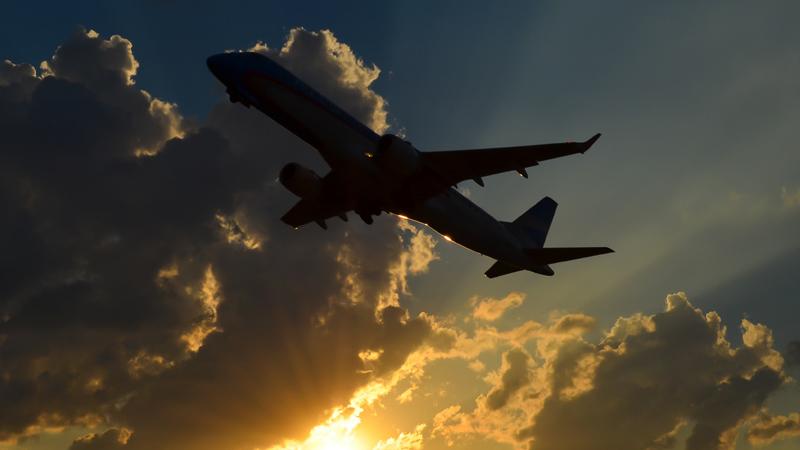Safety, efficiency and modernization
How Argentina’s airports are gaining multiple benefits using Vaisala aviation weather solutions
The client: Argentine Air Navigation Service Provider (EANA)
Vaisala provided: AviMet® Automated Weather Observing System AWOS, AviMet ICAO Compliant Runway Visual Range System (RVR), Observation Network Manager NM10
How do you upgrade the weather observation systems of almost 20 international airports across a country with vastly different climates? With careful planning, expert industry knowledge, and the most accurate and reliable aviation weather technology available.
As a subsidiary of the Ministry of Transport in Argentina, the Argentine Air Navigation Service Provider (EANA) manages air traffic control services for the country. Along with their primary mission of efficient and safe air travel for all of the airports, the organization has been investing significantly in new infrastructure and technology.
Advanced technology for diverse airports
EANA manages dozens of airports with unique climates and sizes. From deserts to jungles and ILS CAT I to CAT III, maintaining on- time flights and safe operations looks different at every airport.
The organization set out to upgrade the airports—including three of Argentina’s largest— that would benefit the most from new weather observation technology. Renewing each airport’s infrastructure would improve the reliability of data reporting and reduce the amount of maintenance required.
EANA sought much more than advanced technology. They needed an organization that would partner with them to analyze each site and determine the optimal sensors and systems that would improve the airports’ situational awareness for greater efficiency and safety. A project of this scale demanded the highest level of industry, technology and project management expertise.
"One of EANA’s management keystones is our technological infrastructure improvement. We are therefore so impressed with Vaisala and their technology. The AviMet system is significantly improving safety and efficiency at Argentinian airports, and helps us get ready for future growth. They also suggested NM10 for centralized information about airports, which has been a great asset to our operations." Gabriela Logatto, President and General Manager, EANA
World-class systems designed to meet local needs
Through a tender process, EANA chose to team with Vaisala and began the multi-year engagement in 2019. After the Covid-19 pandemic broke out in 2020, both companies agreed to renegotiate the contract terms with the aim of ensuring the successful completion of the large-scale project. The combined efforts of both allowed them to optimize and re-direct resources to satisfy different operational needs. A local, dedicated Vaisala program manager worked with them directly to ensure a smooth process with on-time delivery.
EANA selected Vaisala AviMet® Automated Weather Observing System AWOS for all airports for its high accuracy and reliability. The AviMet AWOS collects, processes and visualizes meteorological data in compliance with the International Civil Aviation Organization and World Meteorological Organization standards. The system helps aviation personnel make critical decisions by providing continuous, real-time reports on airport weather conditions.
Fully integrated with AviMet AWOS is the Vaisala AviMet® Runway Visual Range System (RVR). Based on Vaisala LT31 transmissometer technology, the AviMet RVR system provides fully automated runway visual range assessment and reporting, including a calculated estimation of the distance a pilot can see down a runway. This data is critical to ensure maximum safety and efficiency for take offs and landings, especially in Argentina’s airports that experience foggy or rainy conditions.
In evaluating their needs at the beginning of the implementation, EANA integrated Vaisala Observation Network Manager NM10. This software gives them centralized status of the AviMet systems running in the network, as well as direct measurements from neighboring airports or a designated Flight Information Region (FIR).
EANA and Vaisala collaborated to select additional sensors and backup equipment best suited to each airport. Vaisala provided equipment training, enabling EANA to train additional airport personnel as each airport is upgraded to the new systems and sensors.
Improved safety, efficiency and communication for growth
With several airports now fully upgraded to the AviMet AWOS and AviMet RVR systems, EANA is already reaping the benefits: real-time, uninterrupted data on current weather conditions for maximum safety and operational efficiency. Three of the country's largest airports accomplished CAT III for meteorology following the installation.
Pilots, air traffic controllers and managers now have the dependable information they need for better decision making such as what weather conditions to be prepared for and when to adjust operations to avoid weather hazards. The organization also saves time and improves Scan the code for more information communication network-wide with critical status updates of all AviMet stations from a single location. EANA has gained the confidence of knowing that the Vaisala systems are designed to grow with the needs of each airport, so they can plan the most efficient and beneficial expansions. The installations will continue to the rest of the airports with estimated completion in 2022.
Finally, the updated infrastructure is enabling business growth around the airports, leading to improvements for airports and communities alike.
